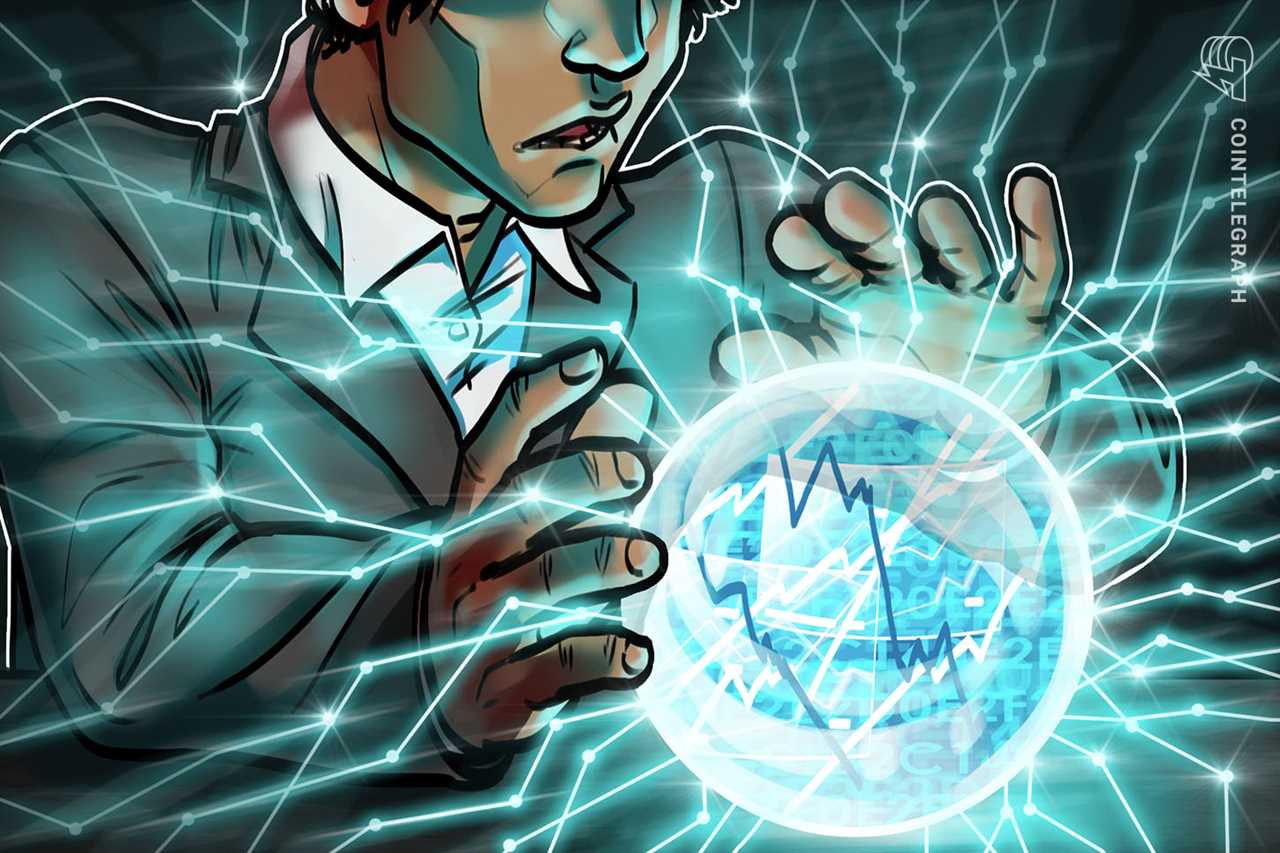
Figuring out the point at which decentralized finance began almost always ends up in a rhetorical debate. Some argue that Bitcoin’s (BTC) invention a decade ago marked the start of it, as the major cryptocurrency was the first peer-to-peer digital money and represents the conceptual core underpinning DeFi. Others say — and would be technically correct in doing so — that DeFi started back in December 2017, when Ethereum-based protocol MakerDAO was launched, followed by Compound Finance and Uniswap, released in September and November 2018, respectively. On the other hand, it wouldn’t be a stretch to say that DeFi’s true ascent started this year.
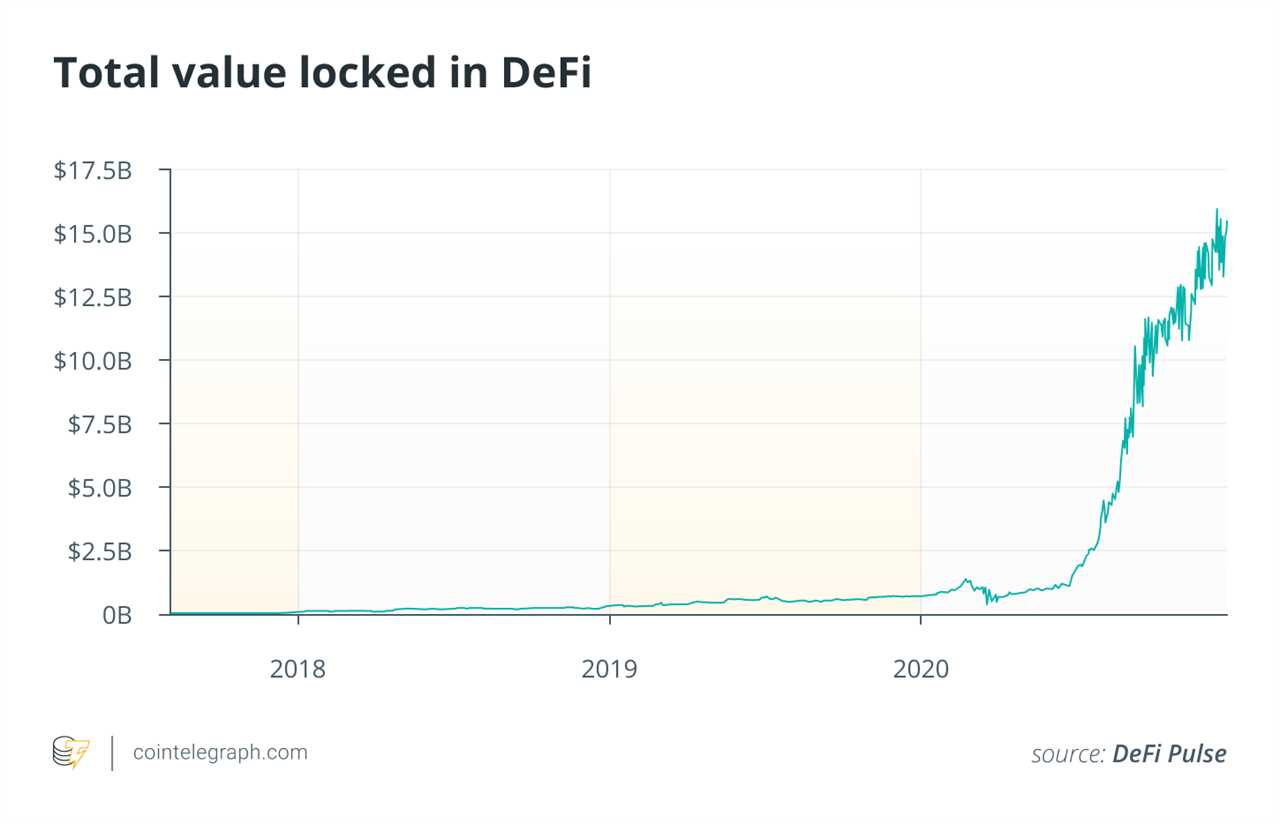
DeFi’s monumental rise in total value locked — starting this summer and surpassing $16 billion this month — has undoubtedly made the sector one of the most discussed topics of 2020. And, as expected, there are those who support it and those who criticize.
Related: DeFi adoption 2020: A definitive guide to entering the industry
Despite being among the hottest topics this year, some still argue that DeFi remains mostly a niche financial tool in the world of global finance. The rapid growth of the money flowing into the space unsurprisingly caused some to compare DeFi with the initial coin offering boom of 2017, predicting its potential failure. Meanwhile, others claim that multiple projects in the space are not really decentralized and don’t represent the true idea of DeFi.
Other concerns are strongly bound to the transaction fees on the Ethereum network, which reached its highest level several times this year, calling the network’s long-term sustainability into question. But it would be incorrect to blame DeFi alone for high gas fees, as they are also influenced by the way institutions store and secure digital assets. One of the solutions might be unlocking Bitcoin’s $250 billion treasure chest for DeFi products.
Related: The butterfly effect: Why DeFi will force BTC to break its 21M supply ceiling
While the very concept of DeFi is promising, there are some pitfalls, obvious financial risks and a number of technical risks as well. It seems only necessary that the underlying infrastructure for most decentralized applications are improved upon.
Related: DeFi-ing expectations: Great opportunities in crypto can come at a price
In the long run, decentralized finance has the potential to change our world, where 1.7 billion people still lack access to traditional financial services. To get back to rhetorical debates about the origins of decentralized finance, it could be said that DeFi is completing the job Bitcoin started, becoming the second step in decentralized evolution, with potential to solve the problem of financial inclusion.
As 2020 comes to an end, Cointelegraph reached out to experts in blockchain technology and the crypto space for their opinions about a “DeFi year.”
How has DeFi affected the crypto industry in 2020, and what should we expect from the DeFi space in 2021?

Brendan Blumer, CEO at Block.one:
“Decentralized finance has certainly been one of the year’s most headline-grabbing features. The billions of dollars of funds that surged into the ecosystem underscores the widespread interest in DeFi; however, this spike in attention has also drawn increased skepticism from regulators, who want to understand the limits and viability of DeFi applications.
At Block.one we believe that there must be an evolution from DeFi to achieve a sustainable connection to the legacy economy and the creation of a more open financial system. We call it Open Programmable Finance, or ProFi. We think about ProFi like a bridge from the transparency and integrity of the EOS blockchain to the regulated financial world.
A key differentiator between DeFi and ProFi is that ProFi businesses incorporate risk-based, permissioned access to transactions based on regulations and compliance. Crypto compliance and regulatory frameworks are taking shape and maturing rapidly. The real winners in the digital economy will be those that think long-term and take the time to ensure their products meet jurisdictional and professional service requirements.”
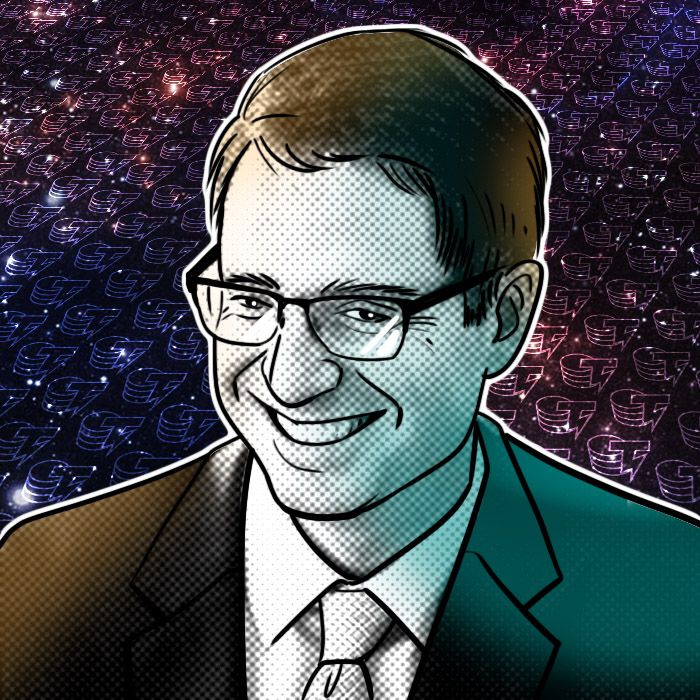
Brian Brooks, acting comptroller of the currency of the United States Treasury’s Office of the Comptroller of the Currency:
“Decentralization is one of the two great forces reshaping financial services. Along with the unbundling of the three traditional core banking activities of lending, payments and deposit-taking, decentralization is transforming how we consume financial services and how banks operate. My view is that we are still in the first quarter of a longer game and many of the greatest benefits and advancements are still ahead.”

Da Hongfei, founder of Neo, founder and CEO of Onchain:
“While blockchain-backed financial solutions are not new, we witnessed exciting and innovative breakthroughs in DeFi this year, ranging from exciting new protocols to improved cross-chain asset bridges.
Moving forward, I believe it’s clear that the blockchain space has embraced both decentralization and interoperability, and I’m confident that both will rapidly advance in the upcoming year. Through cutting-edge interoperability protocols such as Poly Network, we are building the foundation for the smart economy of the future, a world which is truly globalized and boundary-free.”

Dan Simerman, head of financial relations at the Iota Foundation:
“I agree that 2020 was a ‘DeFi year,’ primarily because DeFi projects dominated in terms of technical innovation and development. I would also say that DeFi showed the crypto world that innovation is still possible, and that new projects can still bootstrap liquidity, funding and engagement in novel ways. After the end of the 2017 ICO craze, it was assumed that it would be difficult for new projects to find their footing in a market prioritizing private funding over crowdsourced innovation. Thanks to the tools created within the DeFi bubble, we will see a great deal more innovation in the coming months.
In 2021, we will see some of the core innovations, like pool lending and liquidity mining, permeate into applications we wouldn’t consider ‘financial.’ Entrepreneurs, developers and companies looking to pick a blockchain will expect these core components to be available as part of their DApp toolbox. What we considered radical financial tooling in 2020 will become de-facto requirements for blockchain and ecosystem selection in 2021. We may even see some of the core innovations in DeFi make their way into the world of centralized finance.”

Denelle Dixon, CEO and executive director of the Stellar Development Foundation:
“I have seen a growing focus and an increase in headlines on DeFi across our industry in 2020. But even if the term is ubiquitous these days, I think DeFi means a lot of different things to people and translates in many different ways in existing and emerging projects. As a result, I have a hard time classifying the year as a whole as a DeFi year, but I do think that the DeFi craze has brought a lot of new talent and interest to blockchain and crypto, which is good for the industry as a whole. On Stellar, there is already a lot that you can do that falls in the realm of DeFi.
Still, I think that this raises important considerations for all of us as to why DeFi has been a keen focus and whether there are adaptations that we can make to ensure we are satisfying those needs.”

Emin Gün Sirer, CEO of AvaLabs, professor at Cornell University, co-director of IC3:
“DeFi on Ethereum skyrocketed this year, establishing a vibrant community of applications and users. At the same time, however, the hacks and scams we’ve seen underscore just how much work is left to harden the community, while enormous volumes have shown the limits of DeFi on Ethereum 1.0.
Network congestion pushed fees to new highs, introducing systemic risks with so much of the market being driven by high leverage and collateralized lending. In the event of a price swing — which can normally be absorbed by the system — we saw domino effects of liquidations triggered because users can’t post collateral or exit their position.
The main problem here is that the layer one on which DeFi activity is taking place is too congested. I believe that the launch of new, scalable layer ones, such as Avalanche, will change this. We will begin to see DeFi expand even further.”

Heath Tarbert, chairman and chief executive of the U.S. Commodity Futures Trading Commission:
“DeFi is a growing global trend and its emergence highlights how innovation continues to reinvent the financial services space. By combining multiple technologies to provide financial services in new ways, DeFi could potentially provide a way to expand financial market access to a broader range of individuals and entities. It is a new way to look at finance that leverages and reflects the new ways we all interact.
We cannot be thinking only of the prior way of going to a bank or a broker that you know for years, particularly if you are looking to expand access to financial markets and financial services. Historically, innovation has driven our markets forward and been the lynchpin of their success.
I think, as a regulator, we should expect DeFi to evolve and grow. Each regulator will need to work to identify how DeFi touches their own jurisdiction. In the absence of regulation, industry will need to figure out how to ensure there is market integrity and consumer protection — all areas that regulators will be focused on in the future.”

Jimmy Song, instructor at Programming Blockchain:
“As far as it being the new scam vehicle, absolutely true. We haven’t seen scams like this proliferate since the ICOs of 2017–2018. This is nothing new, of course, as altcoins from 2011 and token sales from 2013–2014 attest. As far as it adding anything beneficial to the ecosystem, I have serious doubts. If three years from now, DeFi turns out not to be a zero-sum game benefiting the people creating the tokens, I’ll reconsider.
I expect 2021 to be more of the same, as people have a hard time learning that all this stuff is minimally useful at best. I expect 2022 to be the year when it finally comes to a grinding halt.”

Joseph Lubin, co-founder of Ethereum, founder of ConsenSys:
“That the value attributed to DeFi protocols rose from $675 million to nearly $15 billion in one year is evidence that DeFi, or as I refer to it, ‘open decentralized finance,’ is having a big year. However, this isn’t just a new exciting use case for crypto — it’s the coming together of an entire decentralized financial ecosystem whose constituent parts have already been in place for several years now. Many in our space refer to these as lego blocks or composable open-sources systems that allow for more complex financial applications, accessible to anyone. It started with a collateral-backed stablecoin (DAI), borrowing and lending of these stablecoins, and ways to efficiently trade without going through a centralized exchange (automated market makers like Uniswap and 1inch). We are now seeing insurance protocols, asset management platforms and even new financial innovations like flash loans.
Our wallet and portal to any DeFi application, MetaMask, improved its user experience over the last few years, making it easy for anyone to switch between accounts and grant permissions only to applications and sites you trust. Their mobile app also is making it easier for DeFi apps to attract a broader, mobile-first audience, which by some estimates, is close to 2 billion people, or about 60% of the internet-connected population. Over 65% of MetaMask Mobile beta users were based outside of North America and Europe, where mobile is prevalent. We’ve heard from users that using MetaMask Mobile has been convenient for individuals to swap crypto tokens, sell NFT art, and earn interest from providing collateral — all from a cell phone.
ConsenSys started when there was no real ecosystem, no infrastructure and no developer tools. Now our developer tools like Truffle serve millions of developers who want to build their own applications. Infura supports more than 130,000 developers by providing node-optimized cloud infrastructure, making it easier to deploy applications without running infrastructure. And with many millions of dollars on the line, our auditing team, ConsenSys Diligence is making sure that smart contracts are tested and safe before deploying. All of this is contributing to the rise of DeFi, because it is easier for a developer to spin up a project based on a vibrant open-source ecosystem.
One trend I anticipate to pick up steam in 2021 is that institutional money and professional traders will increasingly want exposure to DeFi. For that reason, we built an institutional version of MetaMask and are beginning to onboard custodians and professional traders to integrate MetaMask into their tech so they can seamlessly get exposure.
I think that the macroeconomic trends of low (and even negative) interest rates globally will mean that DeFi will increasingly be relevant to normal people. It’s not just the tech and financial nerds that will find this interesting. If bank accounts offer lots of different features that make borrowing and lending easier, allow more people to participate in the upside of markets, and even provide more yield, we could see more people making the move to the decentralized financial rails. As long as the legacy finance world keeps breaking, people will be pushed in our direction.
I also am keeping an eye on how gaming will act as a catalyst for introducing Ethereum-based NFTs, for consumers.”
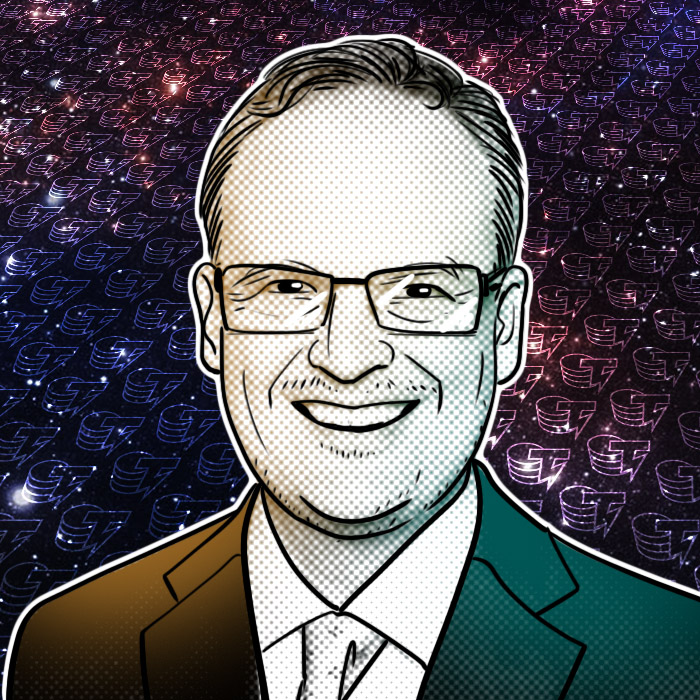
Mance Harmon, co-founder and CEO of Hedera Hashgraph and Swirlds Inc.:
“The rise of DeFi in 2020 has laid the groundwork for enterprises to embed componentized financing directly into their business processes. While the DeFi bubble of 2020 looks in some ways similar to the ICO craze of 2017, the fundamentals of the DeFi movement will change the face of finance in the future.
DeFi will make traditional financing operations faster and less costly, across enterprises, government and for individuals. It will transform every financial transaction that we perform as organizations, as well as in our personal lives.”

Meltem Demirors, chief strategy officer at CoinShares:
“Much of the finance industry is based on two core concepts — securitization and lending. The crypto industry has been engaged in securitization and lending since its earliest days, with the advent of colored coins for Bitcoin and the ERC-20 standard, which made this much more accessible and enabled securitization via tokenization, and the growth of asset-backed lending markets, where holders of Bitcoin and other highly liquid cryptocurrencies could use their holdings to access cash and obtain additional leverage. In 2020, securitization and leverage have found new mediums in the form of DeFi, effectively taking these activities which have traditionally been coordinated by trusted intermediaries like banks, brokers and asset managers, and have migrated them to a peer-to-peer, blockchain-native medium, effectively displacing trusted intermediaries with verifiable technology in the form of open-source code, i.e., the contracts that govern DeFi projects.
DeFi is one step in a journey many of us in the industry have viewed as an inevitability — that securitization, lending and many core finance functions performed by banks and other intermediaries can be effectively migrated into low-trust crypto primitives. With millions of people around the world being net-long billions in crypto assets, it is only inevitable that a market would develop around making these assets financially productive. We’ve been investing time, energy and capital into the DeFi space and look forward to continuing to do so in 2021.
Institutions are not quite ready for DeFi, but make no mistake — they’ll look to replicate their existing business models (and the associated revenues) using crypto as collateral. We expect to see more regulatory pressure, and therefore more anonymous dev-founded projects, as well as the emergence of stablecoins that don’t have any single point of control, like Empty Set Dollar (ESD) or Basis Cash (BAC), two early leaders in this space. We expect to see more assets to be “wrapped,” i.e., securitized, and made available as collateral on-chain, and we look forward to seeing a more robust rate market that begins to price risk and duration across the DeFi space.
At the end of the day, leverage is a helluva drug, and the industry will continue to innovate to keep capital flowing freely. Without access to a money printer, innovation will continue to drive liquidity in the trading ecosystem, where demand for cash and leverage continues to outpace supply, which will drive further asset securitization and tokenization as firms begin to explore more esoteric types of collateral and under-collateralized or potentially even unsecured lending.”

Michael Zochowski, head of DeFi at Ripple:
“2020 may not have been ‘The year of DeFi,’ but it certainly served as its coming-out party. Within the crypto community, DeFi was the most buzzed-about topic as we started to see its potential, but we have yet to see it jump to the mainstream, as most current users are those that were already engaged within crypto. For DeFi to break out of its bubble, we’ll need to see a strategic partnership with a conventional player like a financial institution or fintech.
History will repeat itself — like we saw with the altcoin boom in 2017–2018, many projects will fizzle out, consolidate or get acquired, including some of the 2020 darlings, as we’re already seeing. The ones with true utility will have earned a spot in crypto. The most successful will likely be the simpler applications replicating basic financial services, like wrapped assets and decentralized exchanges.
New DeFi platforms will gain traction as it becomes more and more obvious that performance and cost need to improve significantly. Expect more sidechain projects, bridges between networks and smart contracts building momentum on new networks — as these new systems emerge interoperability and efficiency will rise in importance. With Eth2 still years away, I anticipate at least 25% of the value deployed in DeFi by the end of 2021 to be on networks besides Ethereum, with strong momentum going into 2022 if Ethereum falls further behind on its upgrade plan.”
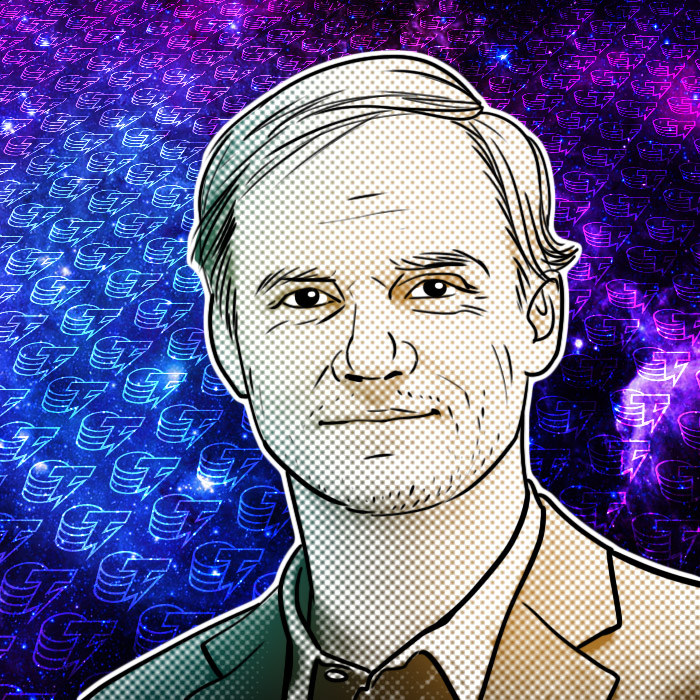
Mike Belshe, CEO at BitGo:
“This was the year when DeFi became a household name, or at least a recognized term in most financial circles. BitGo has been involved in DeFI for a long time and one of our products — Wrapped Bitcoin (WBTC) — burst onto the scene in January 2020 and is now widely used across DeFi. In under a year, the market cap for WBTC has risen to $1.6 billion.
BitGo has the role of sole custodian for WBTC. This means we secure every Bitcoin deposited to mint WBTC. For every 1 WBTC, there is 1 BTC sitting inside BitGo’s vaults being securely stored.
WBTC’s core strength is the transparency and verifiability of the system, which, combined with BitGo’s track record of security, has enabled it to attract the institutional and retail users of DeFi and build a significant amount of liquidity with the market cap continuing to grow.
We’re confident that DeFi applications and use cases will continue to gain momentum in 2021. We will see innovations from decentralized lending to collateralization and insurance that can be built on top of the DeFi infrastructure even without our involvement. The diverse blockchain community identifies exciting use cases far beyond what the technology was initially designed for. This unbound potential for new development is why we’re so passionate about building in this space.”
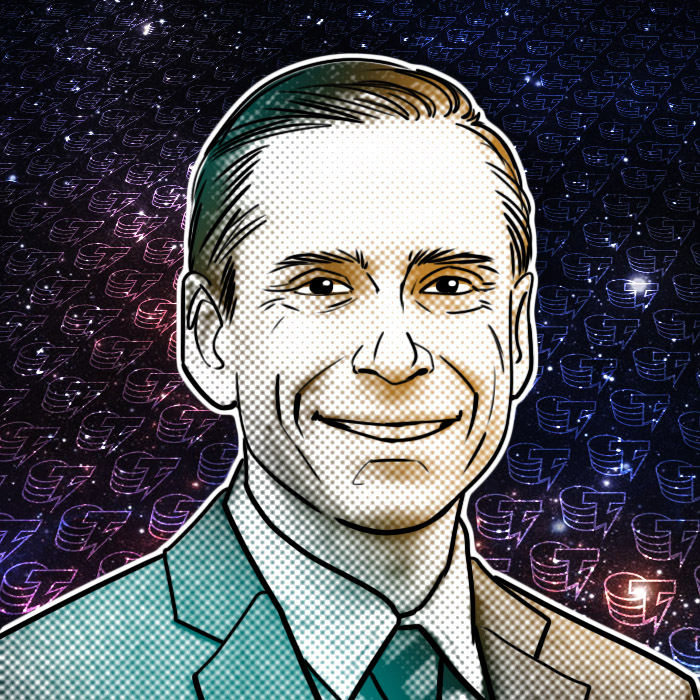
Paul Brody, principal and global innovation leader of blockchain technology at Ernst & Young:
“DeFi is terrific and exciting because the truth about smart contracts is that most of them are not very smart. Historically, they’ve been little more than registers of asset ownership. With the arrival of DeFi, we’ve moved on from having stuff to doing stuff, and so we’re getting much closer to actually fulfilling the goal of smart contracts.
We’re now entering the exciting and scary era when smart contracts are going to move assets and money in automated ways, they are going to be hacked and exploited, and we’re going to learn how to manage those risks while creating value. We’re seeing a bit of this already, but in 2021, it will advance a lot further.
My hopes for 2021 are not only that we will see DeFi contracts mature, but we will also see a transition from DApps towards something we are calling Zapps — zero-knowledge applications — privacy-centric versions of DApps that can be used by enterprises. I think we will see a much more serious approach to auditing and security as well.
Finally, I hope in 2021 that we will see the emergence of decentralized applications beyond finance. Decentralized operations, business systems and infrastructure are all ahead of us, taking the concepts first deployed in DeFi and applying them to a much wider array of services and systems, from inventory to manufacturing to procurement.”

Roger Ver, executive chairman at Bitcoin.com:
“Like cryptocurrency in general, DeFi is just getting started. It is just one more area that Satoshi Nakamoto’s invention has enabled.
Cryptocurrency, tokens, decentralized crowdfunding like Flipstarter, ICOs, and so much more are now possible. The ecosystem is still just getting started, and we are all lucky to be a part of it.”

Samson Mow, chief strategy officer at Blockstream:
“2020 was a DeFi year if we’re defining a year based on hacks and failures. Much like Ethereum, DeFi has served to enrich some insiders and made many others lose money. I’d expect that 2021 will just be more of the same.”
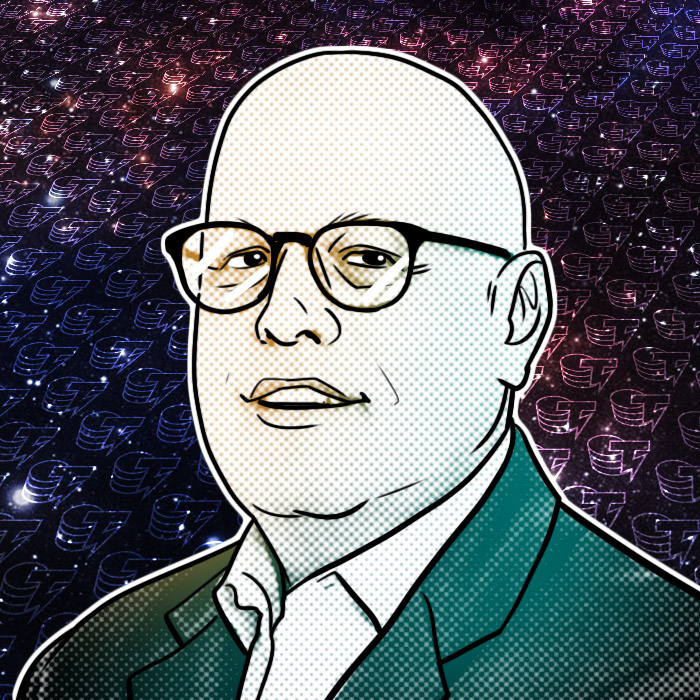
Scott Freeman, co-founder and partner at JST Capital:
“2020 has been a remarkable year for all of crypto, not just DeFi. That being said, we’ve found the institutional growth within DeFi to be remarkable and maybe even more surprising than institutional Bitcoin adoption. We’ve also seen liquidity dramatically improve on decentralized exchanges and lending platforms.
We expect 2021 to see continued growth within DeFi as we see more solution-oriented projects instead of interesting technology in search of a problem to solve.”
These quotes have been edited and condensed.
Title: Was 2020 a ‘DeFi year,’ and what is expected from the sector in 2021? Experts answer
Sourced From: cointelegraph.com/news/was-2020-a-defi-year-and-what-is-expected-from-the-sector-in-2021-experts-answer
Published Date: Wed, 23 Dec 2020 22:27:00 +0000






